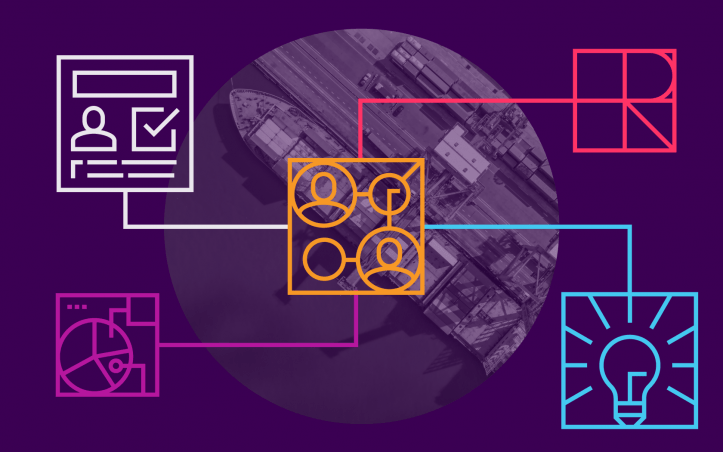The 6 most common things businesses don’t know their supply chain data contains

Do you feel your procurement isn’t running optimally? Or that you can’t quite see the full supply chain picture?
You are not alone. Supply chains are huge data generators. It can be hard to keep up. The landscape appears vast and identifying what’s important can seem difficult, let alone analyzing it to make future decisions. However, the answer may be closer than you think.
In this article we will explore the 6 most common things most businesses don’t know about their supply chain data, and why knowing it can have a positive impact on your business.
1. Understanding Past Performance
By making sense of the past, we can prepare for the future and efficient procurement analytics can help you to understand both.
There are four types of procurement analytics that can reveal various aspects of your supply chain data.
They are:
- Descriptive Analytics- shows you prior performance data
- Diagnostic Analytics- helps you to make sense of why it happened
- Predictive Analytics- analyzing data trends to influence future decisions
- Prescriptive Analytics- make better-informed decisions from predictive modeling
Conducting a thorough analysis will paint a far more detailed picture of where you’ve gone right and wrong, helping you to make better-informed business decisions.
2. Comprehensive spend reports
Analyzing your spend analytics will help reveal both internal and external costs within your supply chain data.
Helping you to:
- Cut costs from unnecessary expenditure
- Analyze savings projects in detail: allowing you to plan and adjust accordingly
- Forecast future spend and assess its effect on profitability
- Assess your current payment terms and optimize them where possible
By shining a light on where your money is going you will cut your costs and spend more efficiently, helping to increase your profit margins.
3. Risk Management
Legislation around supply chains is under increased scrutiny as the wave of online demand soars.
Couple that with pressing current events like the war in Ukraine and you can see why the need to anticipate supply chain disruptions is more important than ever.
Access to clean data will help:
- Analyze current risks and identify which to prioritize.
- Assess suppliers’ exposure to disrupted regions. E.g.: Ukraine, Russia, Middle East.
- Diversify suppliers to minimize potential risks.
- Ensure that insurance is up to date and easy to review.
Managing these risks is imperative to ensuring your business remains agile when challenged with unforeseen adversity.
4. Contract Management
Whether it’s one contract or one hundred; knowing the details of your business interactions is important to make sure your capital is being spent wisely.
Supply chain data will help to:
- Analyze supplier contracts and see key data like payment terms and expiration dates
- Ensure that contracts don’t roll over by mistake
- Optimize current contracts and plan your future ones more efficiently from prior information
- Conduct hassle-free transactions
- Develop a good working relationship between you and your suppliers as well as you and your customers
- Ensure compliance with clearly visible rules and procedures across the board
Supply chain data allows for good contract management as you shed more light on your spend and keep track of financial transactions more effectively.
5. Knowing your Suppliers
For many years business decisions to choose suppliers were influenced by reputation, prior relationships, and in some cases just plain instinct.
The data-powered age of information has changed that; access to clean data now allows for procurement teams to make well-informed, statistical, and objective decisions when formulating and reviewing these partnerships.
Here’s how data will help:
- Monitor suppliers and evaluate supplier risk
- Validate your suppliers’ certifications and accreditations
- Analyze the performance of individual suppliers or compare suppliers’ performance with one another
- Compare supplier performance to the market benchmark
All the above is crucial information whether you are assessing current relationships or planning future ones
6. Sustainability and Corporate Social Responsibility (CSR)
As the issue of climate change becomes more prevalent, the pressure for businesses to go green intensifies.
Government pledges to lower carbon emissions mean that businesses today must adapt to meet sustainability targets and implement eco-friendly best practices.
Your supply chain data will help this transition a smoother process by:
- Have clear visibility of your suppliers’ best practices
- Ensure you and your suppliers are ethically sourcing goods
- Uncover the environmental impact of procurement decisions
- Identify more eco-friendly alternatives where possible
- Encourage green innovation with modern technology
The supply chain landscape can seem murky but good data can help illuminate the way. By uncovering hidden information, your business can innovate, implement better strategies and manage costs effectively. By streamlining your supply chain processes you will create a leaner, more productive environment and boost efficiency. To find out more about clean data and its benefits, be sure to check out our blog and services, and arm yourself with the information required to take your business forward.